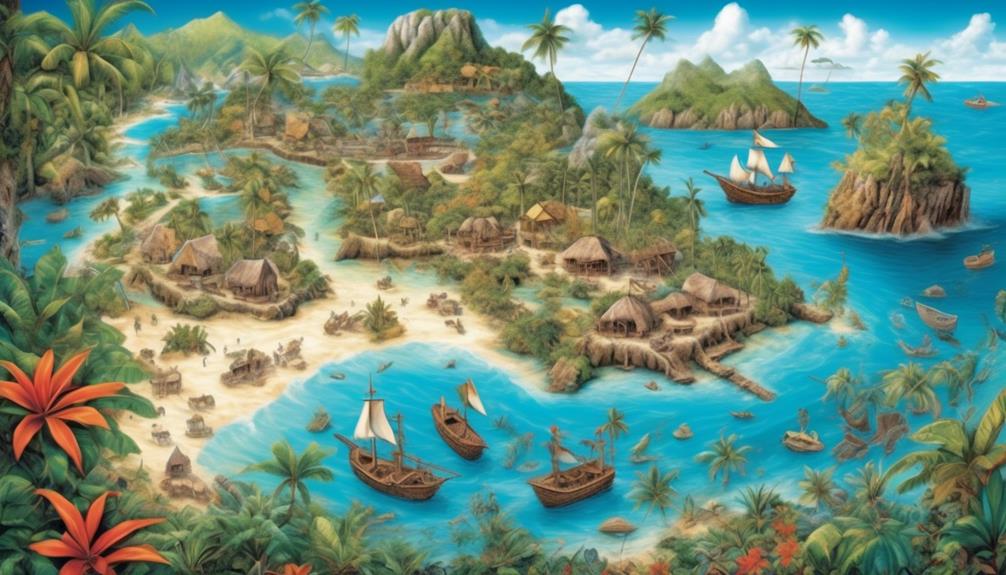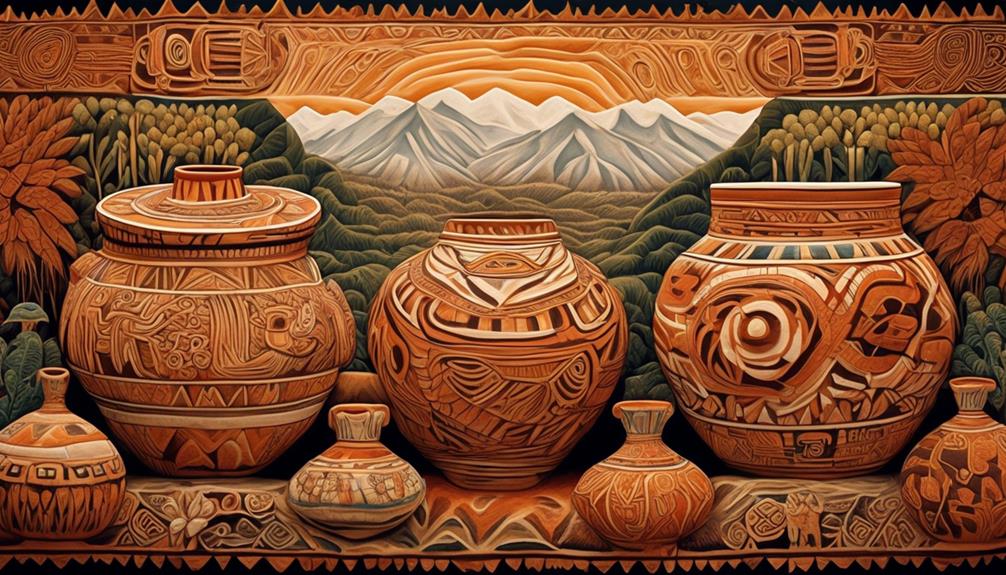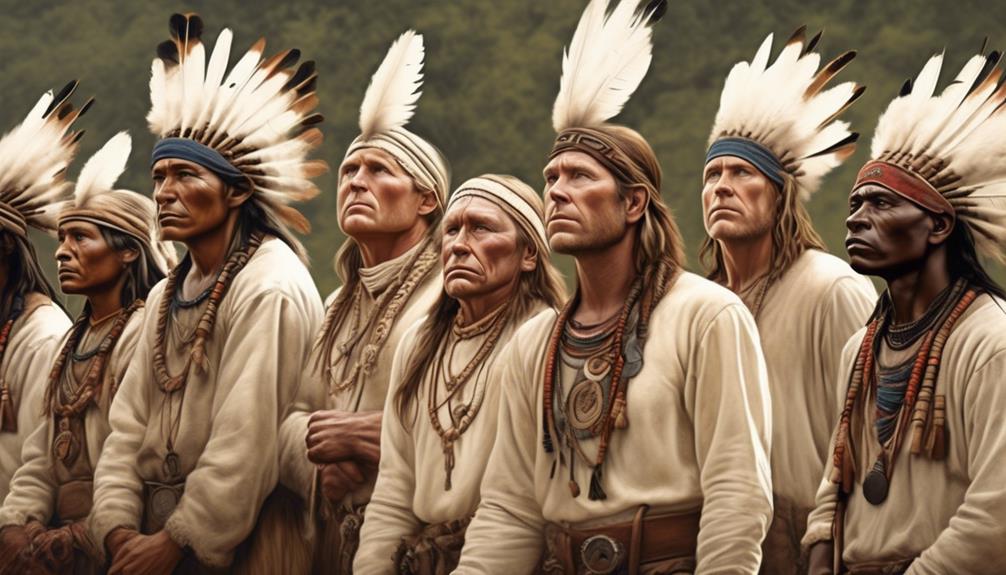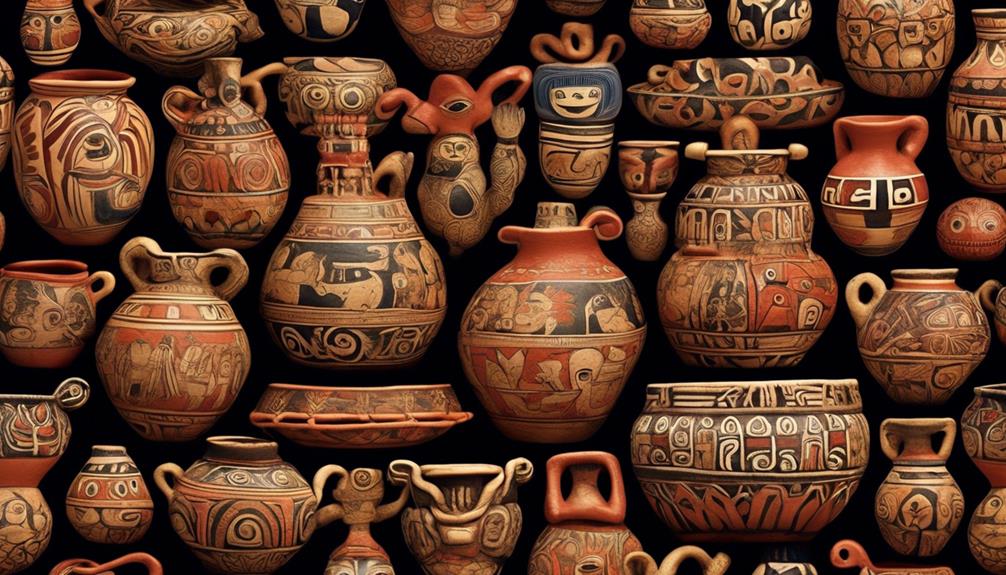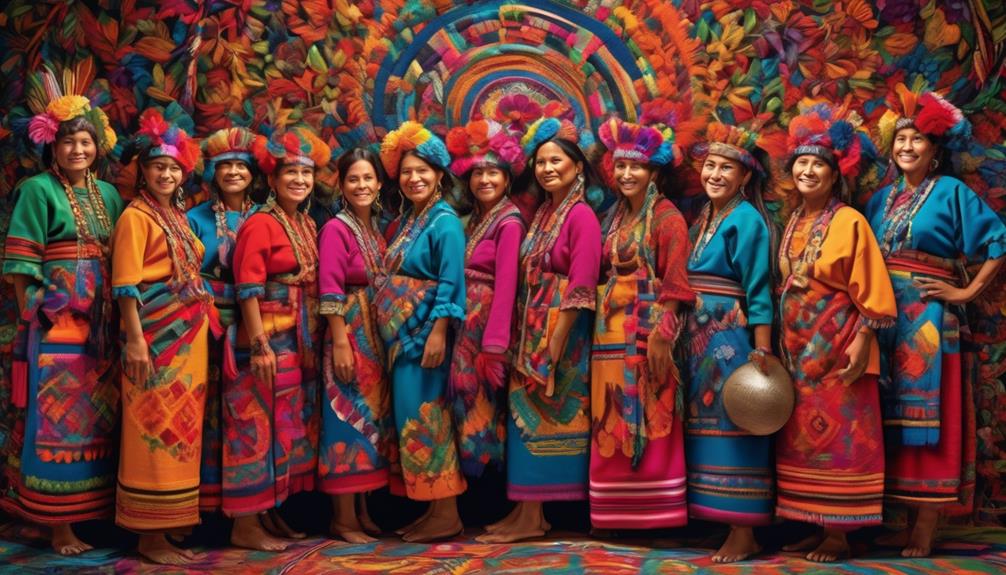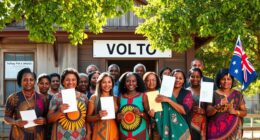The puzzling situation of the indigenous people of the Caribbean still baffles historians and anthropologists. By delving into the intricate and sometimes heartbreaking history of this area, we reveal a succession of occurrences that caused the downfall of these ancient civilizations.
From the moment of European arrival, a cascade of calamities befell the indigenous peoples, reshaping their way of life in ways that are still felt today. But what exactly happened to these vibrant cultures, and what legacy do they leave behind in the Caribbean?
Key Takeaways
- Pre-Columbian Indigenous Societies in the Caribbean had complex social structures, organized around chiefdoms or cacicazgos, with clear hierarchies and advanced agricultural practices.
- The European colonization of the Caribbean resulted in cultural assimilation, economic exploitation, and the introduction of European diseases, leading to the erosion of traditional ways of life, population decline, and lasting effects on indigenous communities.
- Forced labor and enslavement were widespread practices in the Caribbean, with resistance movements among the indigenous population, but it was challenging for these movements to counter forced labor, and the legacy of forced labor and enslavement continues to impact the region.
- The diseases introduced by European settlers had a devastating impact on the indigenous population in the Caribbean, leading to demographic collapse, disruption of social and cultural structures, and a significant decline in the indigenous population.
Pre-Columbian Indigenous Societies
Pre-Columbian Indigenous societies in the Caribbean were characterized by complex social structures, sophisticated agricultural practices, and diverse religious beliefs, providing a rich tapestry of cultural diversity and historical significance.
The social structure of these societies was intricate, often organized around chiefdoms or cacicazgos, where leaders held both political and religious power. Within these chiefdoms, there were clear hierarchies, with nobles and commoners playing distinct roles in society. This structure allowed for the efficient organization of labor for agricultural activities, which were fundamental to these societies.
The Indigenous peoples of the Caribbean developed advanced agricultural practices, including the cultivation of staple crops like maize, cassava, and sweet potatoes. They also practiced a form of shifting cultivation, where plots of land were cleared, cultivated for a few years, and then left fallow to allow the soil to regenerate. This sustainable approach to agriculture sustained their communities and allowed for the development of thriving societies.
Understanding the intricate social structures and advanced agricultural practices of these Indigenous societies is crucial for comprehending the rich tapestry of Caribbean history and culture.
Impact of European Colonization
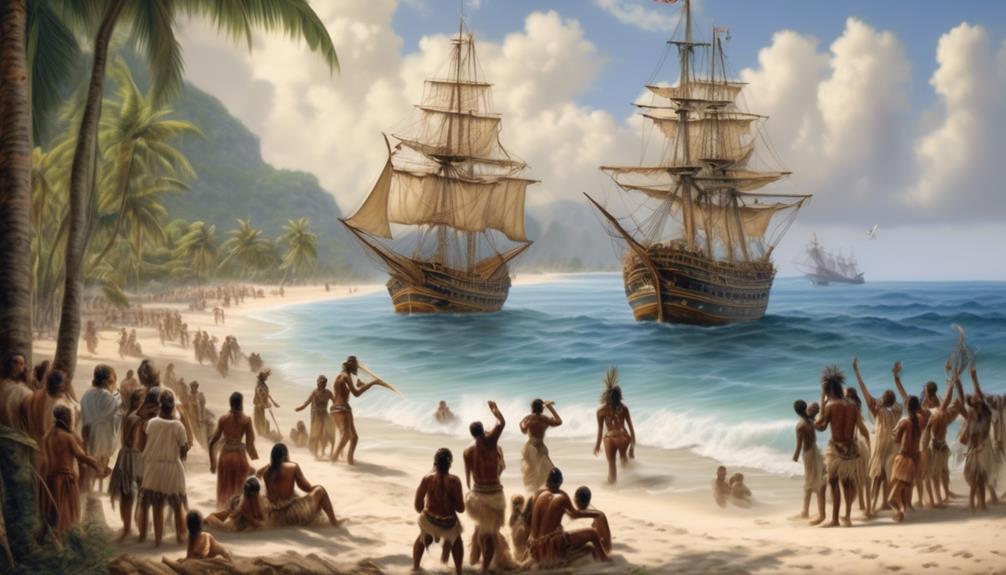
Having arrived in the Caribbean, European colonization brought significant upheaval and irrevocably altered the indigenous societies that had thrived for centuries.
The impact of European colonization on the indigenous population of the Caribbean was profound. Cultural assimilation was a key aspect of this impact. Indigenous people were forced to adopt European customs, language, and religion, leading to the erosion of their traditional ways of life. This process caused immense cultural trauma and disrupted the social fabric of indigenous communities.
Furthermore, economic exploitation was rampant. Europeans exploited the natural resources of the Caribbean and used indigenous people as a cheap source of labor, leading to widespread suffering and loss of autonomy.
The introduction of European diseases also had devastating effects, decimating the indigenous population. These combined factors led to a drastic decline in the indigenous population of the Caribbean.
The repercussions of European colonization continue to be felt today, as indigenous communities grapple with the lasting effects of cultural assimilation and economic exploitation.
Forced Labor and Enslavement
European colonization not only caused cultural trauma and decimated the indigenous population of the Caribbean, but it also led to the widespread practice of forced labor and enslavement.
The arrival of European powers in the Caribbean resulted in the brutal exploitation of indigenous people through forced labor in mines, plantations, and other industries. This system of forced labor and enslavement was profoundly devastating, causing immeasurable suffering and loss for the indigenous communities.
The forced labor imposed by the colonizers led to numerous resistance movements among the indigenous population. These movements were characterized by various forms of protest, including rebellions, escape attempts, and the preservation of cultural practices as acts of defiance. However, the oppressive nature of European colonization made it challenging for these resistance movements to fully counter the pervasive system of forced labor and enslavement.
The legacy of forced labor and enslavement continues to impact the Caribbean and its indigenous population to this day. Understanding this historical injustice is crucial in comprehending the challenges faced by indigenous communities in the present day and in working towards restorative justice.
Diseases and Demographic Collapse
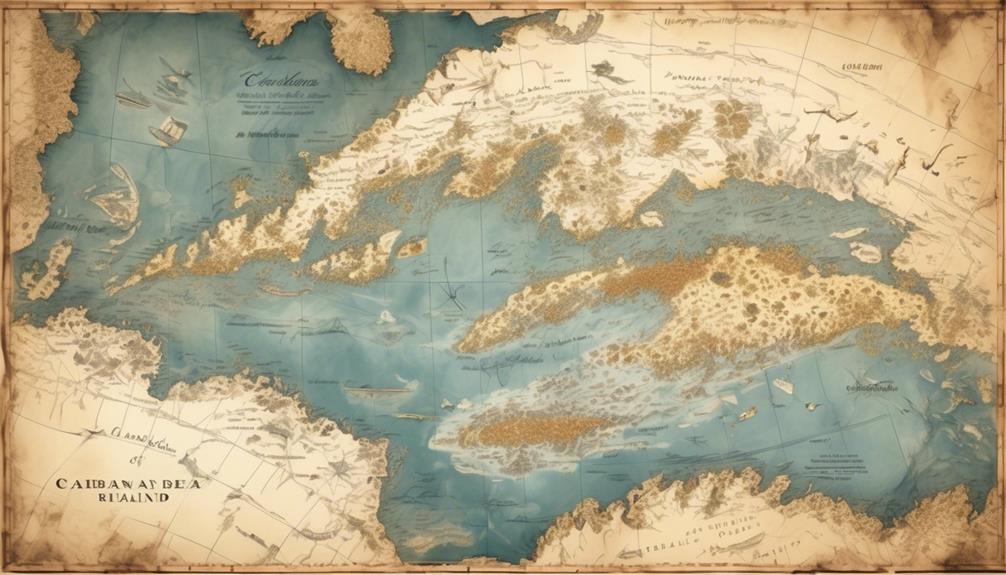
Frequently, diseases introduced by the arrival of European settlers in the Caribbean had a significant impact on the demographic collapse of the indigenous population. The impact of diseases such as smallpox, measles, and influenza can't be overstated. These diseases were previously unknown to the indigenous people of the Caribbean and therefore, they had no immunity to them.
As a result, when these diseases were introduced by the Europeans, they spread rapidly and had devastating effects on the indigenous population, leading to a significant population decline.
The impact of these diseases was compounded by the lack of medical knowledge and resources among the indigenous communities. Without the means to treat or prevent the spread of these diseases, the population was unable to mount an effective defense against them.
Additionally, the social and cultural structures of the indigenous communities were severely disrupted by the loss of large numbers of people, further exacerbating the population decline.
The introduction of these diseases by European settlers played a crucial role in the demographic collapse of the indigenous population in the Caribbean, contributing to a significant decline in their numbers.
Persistence and Revival Efforts
Indigenous populations of the Caribbean have made persistent and concerted efforts to revive and preserve their cultural heritage and traditional practices in the face of historical adversities. Cultural preservation has been a focal point, with initiatives aimed at documenting and transmitting traditional knowledge, language, and customs to younger generations. Community empowerment has played a crucial role in these efforts, with indigenous groups taking proactive measures to assert their rights, protect their ancestral lands, and revitalize cultural practices that were on the verge of extinction.
One significant aspect of the revival efforts has been the reclamation of traditional ecological knowledge, which hasn't only contributed to cultural preservation but has also offered valuable insights for sustainable resource management and environmental conservation. Additionally, there's been a resurgence of interest in indigenous art, music, and storytelling, providing a platform for cultural expression and reinforcing a sense of identity and belonging within indigenous communities.
These persistent endeavors haven't only served to safeguard the cultural heritage of the Caribbean's indigenous populations but have also fostered a sense of pride and resilience, empowering these communities to navigate the complexities of modernity while holding steadfast to their ancestral traditions.
Frequently Asked Questions
What Specific Cultural Practices and Traditions Did the Pre-Columbian Indigenous Societies of the Caribbean Have?
We have studied the cultural practices and traditional rituals of the pre-Columbian indigenous societies of the Caribbean.
These societies had rich traditions, including intricate art forms, agricultural techniques, and spiritual ceremonies.
The preservation of these traditions is crucial for community revitalization and the safeguarding of indigenous heritage.
Understanding and respecting these Caribbean traditions is vital for acknowledging the historical and cultural significance of the indigenous societies that once thrived in the region.
How Did the European Colonization of the Caribbean Impact the Environment and Natural Resources of the Region?
We saw the European colonization of the Caribbean drastically impact the environment and biodiversity. The natural resources were exploited, leading to deforestation, soil degradation, and loss of indigenous species.
The introduction of non-native species also disrupted the delicate ecological balance. This exploitation had long-lasting consequences, altering the region's landscape and contributing to the decline of indigenous populations.
The environmental impact of colonization continues to shape the Caribbean's natural resources and ecosystems today.
What Were the Long-Term Effects of Forced Labor and Enslavement on the Indigenous Population of the Caribbean?
The long-term effects of forced labor and enslavement devastated the indigenous population of the Caribbean, leading to demographic collapse. Despite this, the indigenous communities showed remarkable cultural resilience, preserving traditions and knowledge.
The historical trauma still impacts their descendants today. The forced displacement and exploitation severely disrupted their social structures and traditional way of life. This has had enduring consequences on their identity and well-being, highlighting the enduring legacy of colonialism.
How Did Diseases Introduced by Europeans Contribute to the Demographic Collapse of the Indigenous Population?
We've delved into the impact of diseases introduced by Europeans on the indigenous population of the Caribbean. The devastating decline was exacerbated by the lack of immunity to European diseases, resulting in a significant demographic collapse.
The rapid spread of illnesses upon European contact contributed to the decimation of the indigenous population, leaving a profound mark on the region's history.
What Are Some Current Efforts to Preserve and Revitalize Indigenous Caribbean Cultures and Communities?
We actively support efforts to preserve and revitalize indigenous Caribbean cultures and communities.
Cultural preservation initiatives focus on documenting traditional practices, languages, and beliefs, while revitalization efforts include supporting indigenous-led educational programs, sustainable development projects, and cultural events.
These endeavors aim to honor and protect the rich heritage of indigenous communities, promoting awareness and appreciation of their unique contributions to Caribbean society.
Conclusion
As we reflect on the history of the Caribbean, we're reminded of the adage 'history repeats itself.'
The impact of European colonization on the indigenous population was devastating, leading to forced labor, enslavement, and demographic collapse.
Despite these challenges, the resilience and revival efforts of the indigenous people serve as a testament to their enduring spirit.
It's important to remember and honor their history as we strive for a more inclusive and equitable future.
